[Draft] [“Quantum foundations” series] [Updated 7-1-2024]
Introduction
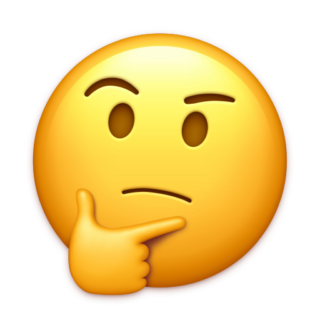
This post is about my ongoing physics research project. To tell a story (perhaps literally) which conceptually unpacks quantum field theory. That is, to develop a framework which:
- Visualizes Wilczek‘s Grid (discussed in other posts).
- Demystifies the historical tropes of quantum mechanics.
Perhaps these tasks are underway elsewhere. While visualization has advanced over the decades, I’ve not encountered any systematic elucidation. Just mainly lots of math. An occasional analogy or wave form. And Big Science and table-top physics are focused on new so-called particles or new types of interactions. Or refining values of key parameters. All of which is vital, but not a compelling narrative.
These fields are actually three dimensional, but if I showed you a three dimensional version of this, your eyes and brain would just be overwhelmed and it wouldn’t be useful. – Nick Lucid [1]
“Demystifying quantum mechanics” preserves the wonder and weirdness of quantum physics. In fact, for me, such demystification makes quantum physics even more mind-boggling – further revealing the limits of our conceptualizations and models. [5]
I’d like to see progress beyond the “frozen” tropes that still pervade technical discussions and general perceptions. For example, in one sense, over the last 100 years or so, it’s progress for the term “wave-particle duality” to have garnered wider recognition. Yet, in another sense, it’s become a catch phrase which sidesteps any more nuanced understanding (as well as fostered popular philosophical allusions). [A note here will cite current examples.]
This project really requires a team. But finding collaborators is problematical. Those with a passion for quantum physics, with skillsets in mathematical physics and visualization (including evocative analogies), and having some distance from academic pressure – to work on telling a story rather than publishing noteworthy papers.
So, I’ll start with a story: a parable by Wilczek (although he may not have called it that) and a tale framed as a remembrance of a journey toward new physics.
Table of contents
- Introduction
- Prologue – a parable of the Grid
- Beyond all gloss – a quantum story
- Quantum physics beyond remembrances
- Notes
Prologue – a parable of the Grid
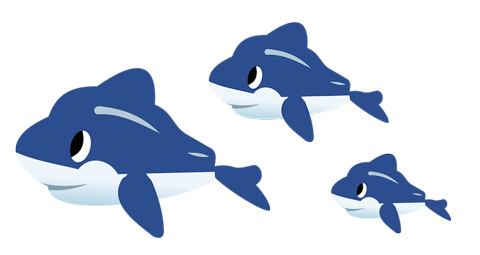
Intelligent deepwater fish – or super-dolphins – figure out “swimming” in a medium
Suppose some species of deepwater fish, that never break the surface, evolved to become more intelligent, and started to do theoretical physics.
Eventually the fish-physicists would realize that they could get a nicer version of mechanics by assuming that they lived in a medium – call it water – [which] complicates the appearance of things. In this way, they’d realize that what they hitherto regarded as “nothingness,” their ever-present environment, is actually a material medium.
And then they might be inspired to do experiments to try to make ripples in the medium, to find its atoms, and so forth.
Well, we’re like those fish. Human-physicists have discovered that we can get nicer, simpler accounts of how particles behave by assuming that we’re embedded in a medium, whose presence complicates the appearance of things.
– Physics history, Earth: Frank Wilczek, “What is Space?” (2009)
Beyond all gloss – a quantum story (perhaps) [4]
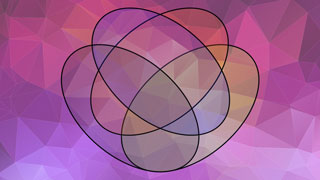
At this elevation, the landscape looked wonderful. The day was clear, clean. Inside the observatory, Tau was shielded from the not so delightful aspects of the site. Like reduced atmospheric oxygen, gusty cold, and higher radiation.
Tau was waiting for results of his latest simulations. Even supercomputers took awhile.
The conference room was one of his favorite places, with expansive windows and multispectral overlays. Presently unoccupied, Tau was reflecting on being there. Something serendipitous, in a way.
Some of the solar and dish arrays were visible outside. And the more recent upgrades which kept the place operational. The site was witness to a long arc of physics. Of understanding quanta. In the past many people saw the solar panels as collecting particles and the dishes waves. An alchemy of the sky’s electromagnetic spectrum. But that didn’t really matter if you just did the math. Visualization was mostly a never-mind.
Leave the stage of everyday …
go behind the scenes,
beyond all gloss …
until there’s just the lower bound
What remains?
What only can be imagined …
perhaps modeled mathematically
What are the words (or poetry)
to frame such a construct,
it’s structure and topology?
How does the everyday emerge
from that matrix effectively?
to be continued …
Quantum physics beyond remembrances
A framework for renewed visualization
Research objective: visualizing the Grid (inspired by theoretical physicist Frank Wilczek)
The journey: the mundane –> mysterious –> mundane redux
The Grid
As discussed my post (and comments) “How stiff is space-time?” – here’s Wilczek’s depiction of the multilayer Grid.
The primary ingredient of reality is alive with quantum activity. … The primary ingredient of reality also contains enduring material components. These make the cosmos a multilayered, multicolored superconductor.
I will use the word Grid for the primary world-stuff. That word has several advantages [vs. ether, space-time, quantum field]: We’re accustomed to using mathematical grids to position layers of structure, … – Wilczek, Frank. The Lightness of Being: Mass, Ether, and the Unification of Forces (p. 74). Basic Books. Kindle Edition.
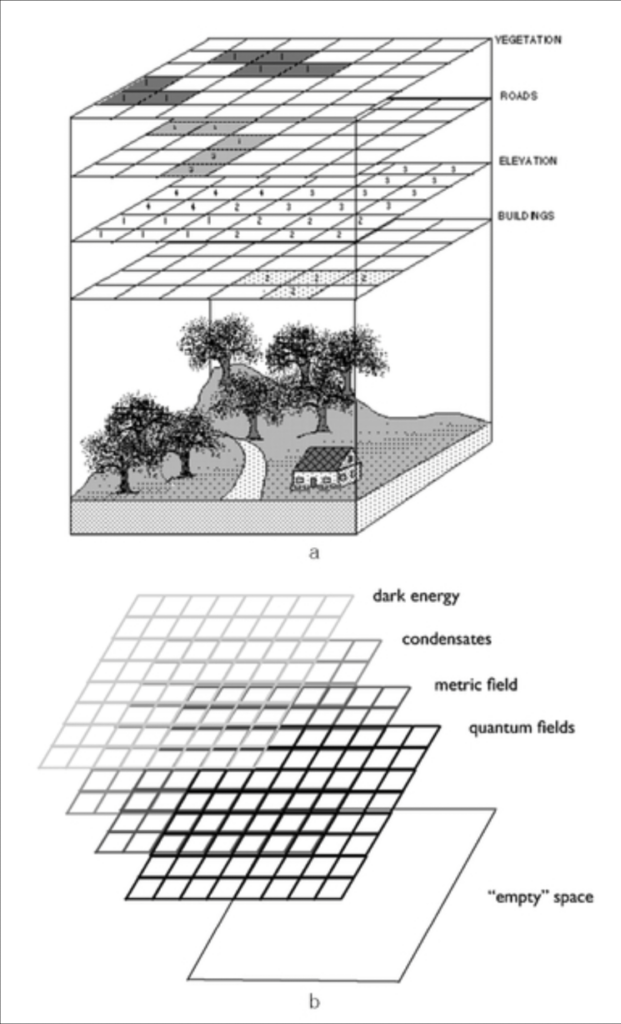
Possible conceptual framework
10^n and 10^-n
energy / contours of energy
dimensions
fluids
fluid dynamics
diffusion equations
energy spectrum
fields
gradients
wave forms
superposition
wavepackets
confinement (boundary conditions, dampening)
What’s actually happening [re quanta] is a combination of (1) fundamentally smooth functions, (2) differential equations, (3) boundary conditions, and (4) what we care about [which factors in dissipation]. – Sean Carroll [2]
interactions
entanglement
• Quanta Magazine > “Entanglement Made Simple” by Frank Wilczek (April 28, 2016) – An aura of glamorous mystery attaches to the concept of quantum entanglement, but …
The baggage of behind (popsci tropes)
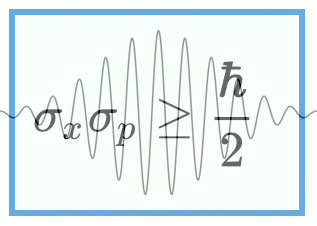
Research objective: Demystify the historical tropes of quantum mechanics
point particle
As quantum field theorist Steven Weinberg puts it, “The basic ingredients of nature are fields; particles are derivative phenomena.” – “Tales of the Quantum: Understanding Physics’ Most Fundamental Theory” by Art Hobson
wave-particle duality
Regarding wave–particle duality, you’ll see that the successes of quantum field theory – the theory that unites quantum physics with Einstein’s ideas about space and time as stated in his special theory of relativity – has convinced such leading quantum theorists as Steven Weinberg and Frank Wilczek that the universe is made of waves in fields rather than particles in empty space; both the scientific consensus and the evidence now point in that direction. – Ibid.
Philip Ball is an excellent science / physics communicator, but this recent article (below) presents a legacy framework. It does not even mention the context of current quantum field theory, as discussed by physicists like Steven Weinberg and Frank Wilczek, as well as the demystification (and clarification) which Art Hobson offers in his book Tales of the Quantum (particularly regarding the double-slit experiment).
But Ball’s brief historical recap hopefully puts to rest the notion of “morphing” – the “flawed classical analogy” that quanta are like shape-shifters, with different forms for different occasions. That neither classical term – wave or particle – suffices (yet, without any mention of wavepacket, eh).
However, he does not mention that even atoms (and molecules) exhibit interference in double-slit experiments.
Nor does he mention the role of entanglement:
So entanglement and nonlocality are ubiquitous within atoms, which is why an atom behaves in so many ways like a single unified quantum; it can, for example, interfere with itself. Every highly entangled system is similar to individual atoms in the sense that the entangled system behaves in the unified, “all or nothing” manner of single quanta. – Hobson, Art. Ibid. (p. 181)
• Chemistry World > “A common misunderstanding about wave-particle duality” by Philip Ball (13 June 2024) – Instead of treating quantum particles as shape-shifters, we should think in terms of probability distributions
The meaning and the significance of wave-particle duality is widely misunderstood, as some of the reporting of the latest work shows.
… there is no reason to say that quantum entities are ever really waves. Rather, the probabilities of where we will observe them in an experiment can be conveniently determined by the calculus of the Schrödinger equation, …
Confined in a well [so-called particle in a box], an atom’s wavefunction is tightly confined: it looks [interacts] like a discrete particle.
When the optical lattice is turned off, the atoms are free to wander – and the Schrödinger equation predicts that their wavefunctions spread in all directions. This doesn’t mean that the atoms themselves are smeared out like waves; rather, what spreads is the probability distribution of them being found subsequently in a given location. That is just what the researchers see: they image the atoms’ later positions, and find that the histograms of these positions over many repeated experiments on the same system reveal a distribution that evolves in time just as the Schrödinger equation predicts.
uncertainty principle
spin
force (charge, mass)
singularity
collision
Particular foundational problems
Context: interactions with the Grid and so-called mass / charge states; and the topology of “flavors,” etc.
- the neutrino
- mathematical models and infinities
- why sum over all paths works (with finesse) [3]
- …
Notes
[1] Regarding our ability to visualize higher dimensions …
My post “Reckoning quanta, quantum events” cites Nick Lucid’s discussion of quantum fields.
• YouTube > The Science Asylum > “What Are Particles? Do They ACTUALLY Exist?!” by Nick Lucid (May 1, 2023) – Somewhere between 1926 and 1950, we gave up the concept of particles in favor of quantum fields. In this video, I explain the motivations for that to a non-physicist: my wife.
[2] Carroll’s post also is an example of the use of an occasional analogy (violin strings) or wave form (but not wave pulse / packet).
• Preposterous Universe (Sean Carroll) > “Thanksgiving” (November 23, 2023) – A frequently misunderstood (or misinterpreted) feature of nature is the relationship between discrete (measurable) “quanta” – individual excitations of quantized fields (“particles”) or the energy levels of atoms – and smooth and continuous mathematical models of reality.
[3] See these comments for my post “Reckoning quanta, quantum events“
• May 24, 2023 > “… the equation [Feynman path integral], although it graces the pages of thousands of physics publications, is more of a philosophy than a rigorous recipe. … it does not tell researchers exactly how to carry out the sum. … they face deep confusion about which possibilities should enter the sum.”
• May 25, 2023 > “Our work paves the way for experimentally exploring the fundamental problems of quantum theory in the formulation of path integrals.”
[4] Perhaps Tau’s observatory (on some planet) is a far future successor to the observatory noted in this Space.com article:
• Space.com > “The highest observatory on Earth sits atop Chile’s Andes Mountains — and it’s finally open” by Sharmila Kuthunur (May 1, 2024) – Establishing and constructing the telescope required broad collaboration, with both technical and political challenges.
The Japanese University of Tokyo Atacama Observatory, or TAO, which was first conceptualized 26 years ago to study the evolution of galaxies and exoplanets, is perched on top of a tall mountain in the Chilean Andes at 5,640 meters (18,500 feet) above sea level. The facility’s altitude surpasses even the Atacama Large Millimeter Array, which is at an elevation of 5,050 meters (16,570 feet).
TAO is located on the summit of Atacama’s Cerro Chajnantor mountain, whose name means “place of departure” in the now-extinct Kunza language of the indigenous Likan Antai community. The region’s high altitude, sparse atmosphere and perennially arid climate is deadly to humans, …
[5] Demystification in the sense also used by Fermilab’s Don Lincoln, as noted in my post Wavepackets and uncertainty principle:
• YouTube > Fermilab > “Demystifying the Heisenberg Uncertainty Principle” by Don Lincoln (Oct 16, 2023)

Credit: Pixabay/CC0 Public Domain
Quantum computing is mysterious. What with its own myths and tropes. As practical use of quantum superposition and entanglement. Can it be demystified?
• The Quantum Insider > Quantum Computing Business > “Google Quantum AI Team Demystifies Quantum Computing & Its Future Potential” by James Dargan (June 7, 2024) – Quantum is the language of nature, so simulations need to use quantum computers.
• YouTube > Google for Developers > “Quantum computing: Facts, fiction and the future” (May 16, 2024)
Key points
I’ve noticed lots of articles lately about quantum computing (and networking) which portray active and routine use of entanglement. Spookiness that just works. This article (behind paywall) notes this context.
Similar questions (search queries):
• New Scientist > “How quantum entanglement really works and why we accept its weirdness” by Michael Brooks (May 22, 2024) – Quantum entanglement is a resource for new technologies but defies any sensible explanation.
“Local reality” need not apply, eh. Sharing quantum information requires correlations.
• Scientific American > “Quantum Entanglement Isn’t All That Spooky After All” by Chris Ferrie, faculty member of the Center for Quantum Software and Information at the University of Technology Sydney (Feb 13, 2023) – Quantum entanglement is … usually poorly described as an invisible link between distant quantum objects that allows one to instantly affect the other.